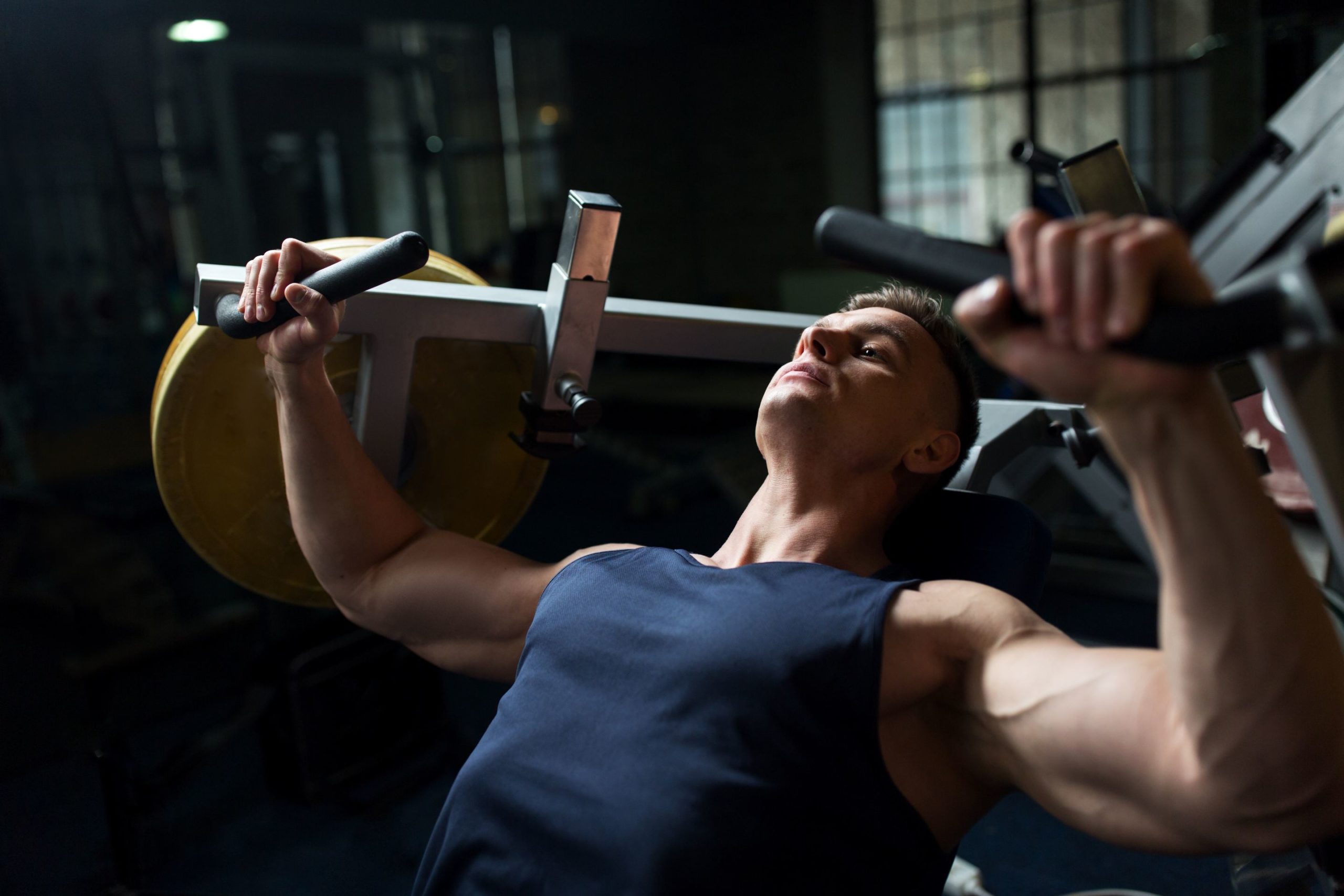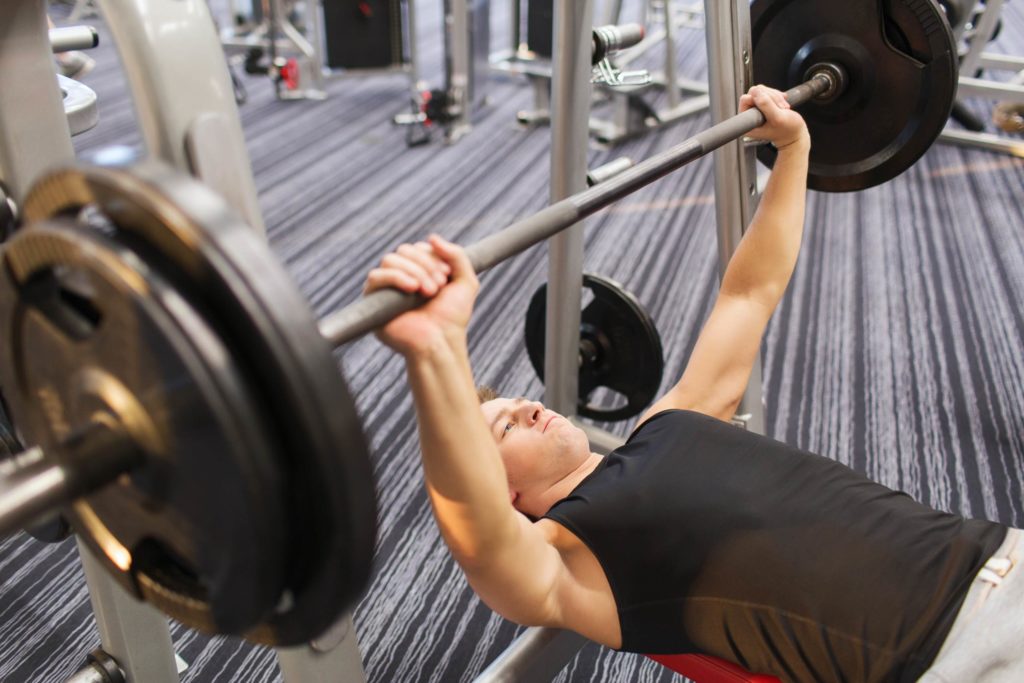The best methods to train the chest muscles

The chest muscles are among the strongest muscles in our body. Unfortunately, it is not as easy to train as, for example, the leg muscles. But with the right strategy and exercises, it is possible to train the chest muscles optimally.
The chest press is the most effective exercise
Let us first take a look at current research. One of the most famous scientists in the field of muscle growth is Dr. Brad Schoenfeld. He has determined which conditions must be fulfilled in his studies for the best possible muscle growth. The Result: The weights must be heavy and the movement amplitude large. Therefore, the bench press is the best method to grow the chest muscles. Nevertheless, there are other essential exercises. Because variety is also significant in training.
The more variable the training the better
Using so-called electromyographic measurements, the sports scientist Dr. Bret Contreras has discovered the following:
- The best way to train the inner part of the chest muscles is to reduce the distance between your hands on the barbell.
- The lower parts of the pectoral muscle can be built up best if you lower the bar slightly in a parabolic shape above the costal arch and lead it upwards again.
- The middle parts of the pectoral muscle benefit when lowering and lifting the weight above the middle of the chest.
- With an incline bench, you train more the upper part of the chest muscle.
The higher the weight, the better
The chest press is definitely the best exercise to train your chest muscles. You can work with high weights, create high tension and have a large movement amplitude. The higher the weight, the more influential the muscle growth. In addition, you also train important auxiliary muscles with the chest press. These include your shoulder muscles, the triceps, the serratus muscle, and the entire back muscles.

The best technique in chest press
In studies, scientists have tried to find out which technique has the greatest success in the chest press. If you familiar with the technique of the chest press you should proceed as follows:
- Use a wide grip. The ideal is double the width of the collarbone. The elbow then has an angle of about 80 degrees.
- This wide grip is especially recommended for those whose muscles are not yet so well developed.
- Place the feet on the ground, the back is slightly arched and the shoulder blades are firmly attached.
- Take a deep breath and lift the barbell bar out of the anchorage.
- Then lower the weight in a controlled manner. The bar may carefully touch the sternum.
- Then exhale and push the weight upwards. The back is slightly arched. This keeps the spine in a stable position.
- Depending on your performance and years of training, you work at 80 to 95 percent of your maximum strength. If you use lower weights, the auxiliary muscles take on too much work. This reduces the success.
- Due to the high weights, you should definitely train with a partner for safety reasons.
How to train the chest muscles with dumbbells
You can also train your chest muscles with a dumbbell. However, you will then work with lower weights to be able to perform the exercise correctly. This reduces the stimulus for the muscles but is still effective. Because you have to apply a plus of strength to stabilize the two weights and simultaneously push them upwards. If you have problems with your shoulders, you can also do the dumbbell training lying on the floor. This is then less stressful because the sensitive joint is better protected.
A special tip for training with dumbbells
- You lie down on a bench and take a sufficiently heavy dumbbell in each hand.
- Then you hold the dumbbells with almost outstretched arms above the chest.
- Now lower the dumbbells to chest height and try to hold them in this position for 20 to 45 seconds.
- This exercise is ideal at the end of training to “burn out” the muscles.
The power secret of this exercise
The idea for this exercise came from Professor Mike Israetel, who investigated the effect in a study. This is how he explains the impact: During the holding phase, the blood can only circulate to a limited extent. As a result, the tense chest muscles fill up with so-called metabolites and growth factors. Both allow the muscles to grow.
Do not underestimate push-ups
Push-ups are another highly effective exercise to train the chest muscles. They are considered an ideal supplement to the bench press and should be a regular part of the training. Push-ups can also be varied very well. However, they require a large movement amplitude and the use of the serratus muscle. And if dumbbells are not available, they are the best muscle maintenance training.

The right technique for push-ups
- Get into the push-up position with outstretched arms. Your gluteal and abdominal muscles are tense and you look down.
- Then you bend your arms in a controlled manner and lower yourself. Your nose and chest may almost touch the ground.
- Then push up again in a controlled manner. Best until the chest contracts and the back are stretched.
- This additional range of motion strengthens the serratus muscle. Although it is not part of the chest muscles, he looks great when visible.
- If you can do more than 30 push-ups, you should not do more repetitions. Because then you train more muscle endurance. Then it is better to choose harder push-up variations.
- You can put a weight plate on your back. Or you can do explosive push-ups by pushing up so hard that you can clap your hands.
Train the chest muscles with dumbbell flys
Flying with the dumbbell is ideal to strengthen the chest muscles in isolation. The exercise can be performed on a flat bench, an incline bench or a big fitness ball. That’s the way to do it:

- You lie down on the bench with dumbbells in both hands. Press your feet firmly into the floor.
- Then you lead the dumbbells in a wide arc up to shoulder height. The dumbbells may touch each other slightly.
- Inhale deeply and then lower the dumbbells in an arched movement to the level of your ear. Do not twist the arms.
- Hold it briefly and then lead it up again in a controlled manner, as if you wanted to hug someone.
Seated cable flys
This exercise is not quite as effective, but allows constant tension and therefore has also a good growth stimulus for the muscles. You have constant tension. In addition, the shoulders, the trunk and leg muscles are used as auxiliary muscles. This is how you should perform them:

- The handles are located at chest height. Take them in both hands. The elbows are slightly bent.
- Then you lead your arms in a large bow movement in front of your body. The arms are always slightly bent.
- When the hands almost touch each other in front of the body, you guide them back to the starting position in a controlled reverse bow movement.
Pullovers with dumbbells or barbell
The pulling movement gives you the opportunity to stimulate your chest muscles in a completely different way. Pullovers help you to develop round and full pectoral muscles. The already mentioned Dr. Bob Contreras has examined the exercise in studies and found it to be very effective. It also has the advantage that many auxiliary muscles are used.

A few more tips
If you want to build up your chest muscles optimally, you should incorporate the exercises presented here into your training program. Make sure that you have enough time to regenerate after the training. Depending on your fitness level, this can be up to 48 hours. It is important to vary the exercises again and again and not to concentrate exclusively on the chest press.